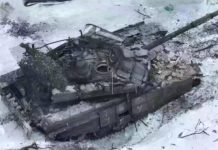In 1940, Patton believed that cavalry would soon be replaced by tanks and armored vehicles on the battlefield.
An extremely arrogant and war-hungry man, Patton almost jumped to the news of the United States’ participation in World War II. In his eyes, only war did military commanders – like Patton – quickly achieve success.
This general, dyslexic and very ignorant at school, joined the 3rd Army to attack France after the US opened the second front and attacked a Nazi den. His tactics could be considered a copy of the German “lightning warfare” tactic, used to attack Poland in 1939. However, Patton took this tactic to a new level, with Extremely good speed and logistics capabilities of the richest army in the world.

The strategy of General Patton and the 3rd Army was very simple, using powerful tank divisions, hitting the enemy’s lines. At the same time put pressure on the enemy’s back lines, forcing the frontline units to retreat due to lack of logistics or down morale.
Meanwhile, Patton’s infantry simply overflowed, filling in the battle space that the enemy left. It sounded quite simple, but at the time, with his strong logistics capabilities, General Patton had sparred the vanguards of tanks, messing with the enemy for a week, causing tremendous damage to the enemy.
Only during the operation from the Rhine to Elbe, Patton’s 3rd Army had only 300,000 soldiers, captured 84,000 square kilometers of Nazi territory. Their damage was also record low, only about 10,000 casualties, but caused 70,000 casualties to Germany, capturing 650,000 enemies.
By the end of World War II, the 3rd Army, under Patton’s command, had liberated 211,000 square kilometers in 281 days of combat, liberating 12,000 towns and villages, crossing 24 major rivers in Europe. General Patton’s 3rd Army also captured, destroyed or removed from the battlefield 1.8 million German soldiers – three times the number of this force.
Those were unprecedented records in the history of the war. Excluding logistics, transportation, and ambulance units, each Patton soldier liberated and held on to a square kilometer for nearly a year – an unprecedented combat performance.


















